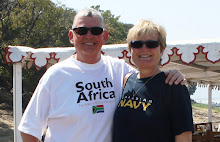 Punta Arenas in Chile is the southernmost city on the South American mainland, located in one of the wildest and remotest regions on earth.
Punta Arenas in Chile is the southernmost city on the South American mainland, located in one of the wildest and remotest regions on earth.The city has enjoyed two heydays in its history – the first lasted from 1850-1914 when the port was the principal supply station for ships rounding Cape Horn. By virtue of its strategic location Punta Arenas was one of the busiest ports in the world but its golden age ended abruptly when the Panama Canal opened in 1914. Punta Arenas languished until oil was discovered in the 1940s.
After a morning in town we set off to the Martime Museum but were puzzled when we arrived at what looked like a junk yard. Guards monitored the locked gates and beyond we could see a number of rusted shipwrecks stretching out into the sea.
 No problem it seemed, the gates were opened and dodging pieces of tangled metal and other discarded maritime materials we ventured towards a cavernous hulk.
No problem it seemed, the gates were opened and dodging pieces of tangled metal and other discarded maritime materials we ventured towards a cavernous hulk.What happened next was one of those magical travel moments.
 Peering inside the wreck we saw that a walkway had been constructed within its hull. Gingerly we stepped inside, careful not to bang our heads on the girders that criss-crossed overhead. Turning a corner we discovered that the walkway continued through a second wreck.
Peering inside the wreck we saw that a walkway had been constructed within its hull. Gingerly we stepped inside, careful not to bang our heads on the girders that criss-crossed overhead. Turning a corner we discovered that the walkway continued through a second wreck. Through rusted portholes we could see Punta Arenas on one side and the open ocean on the other. The sun shone brightly enhancing the ocean’s deep marine blue colour.
Completing our walk through the second hulk, a third wreck beckoned. This time it was a three-masted vessel named the County of Peebles – an iron transporter ship launched on Clydeside (Glasgow) in 1890. Sadly the ship had ended its days washed aground by the unpredictable weather of the southernmost tip of the South American continent.
At the aft of the County of Peebles we entered a cabin which looked remarkably in tact. Still unclear as to what awaited us, smartly dressed waiters greeted us with trays of pisco and all sorts of interesting snacks. We were in the Chilean Navy’s Officers’ lounge!
The original helm, compass and figurehead from the County of Peebles graced the cabin which was lined with the ship’s original wooden seating and an attractive window through which Tierra del Fuego beckoned.
Our host explained the history of the County of Peebles adding that the Chilean Navy used all three rusting hulks as a breakwater. As we listened to the story, the structure moved gently with the incoming tide. We discovered that the visit had been made possible by the boss of the local travel bureau who happened to be a good friend of the local Naval commander. The very fact that we were able to sit within the confines of the County of Peebles and hear its history was a bit of a fluke. As we ventured back through the convoluted series of walkways to shore one of our travel companions - a flamboyant art dealer from San Francisco - grasped Doug’s arm and gushed “Wasn’t that the most original cocktail party you’ve ever been to in your life!”
As we ventured back through the convoluted series of walkways to shore one of our travel companions - a flamboyant art dealer from San Francisco - grasped Doug’s arm and gushed “Wasn’t that the most original cocktail party you’ve ever been to in your life!”
There was no denying that.


1 comment:
Thanks very much for description of your visit to the County of Peebles.
The other vessels that form the breakwater are the former ship Falstaff built at Barrow, UK in 1875 (see http://www.mightyseas.co.uk/marhist/furness/barrow_sb_co/falstaff.htm ) and the steamer Hipparchus that was built at Hebburn on Tyne in 1867 (see www.bluestarline.org/gangway_1/London%20News%2008.pdf )
Regards
MF
Post a Comment